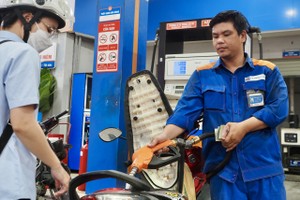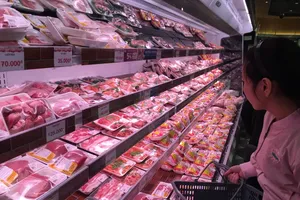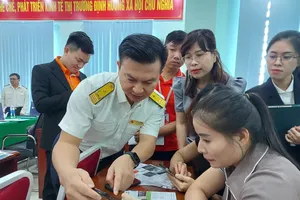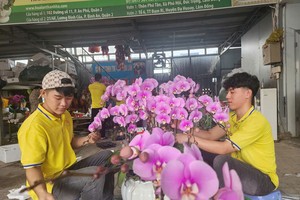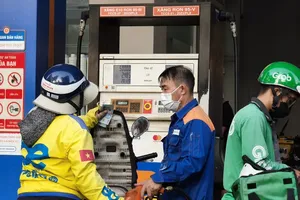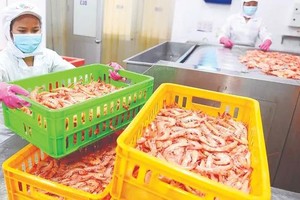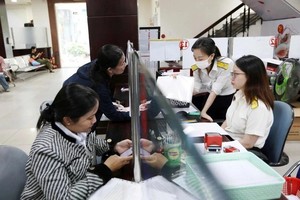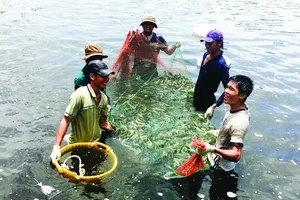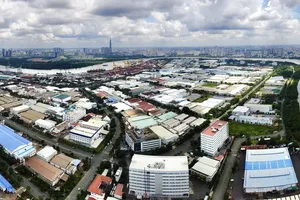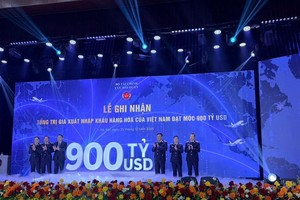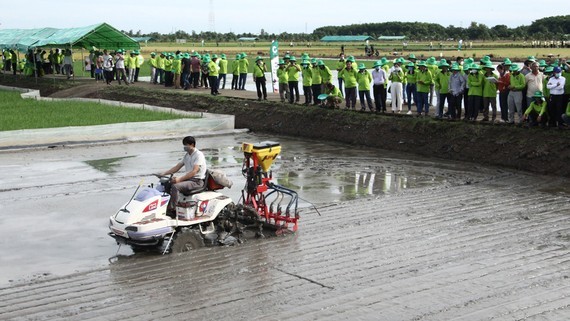
The Agriculture Minister made the statement at a meeting with leaders of the agricultural sector in the Mekong Delta region lately. According to Mr. Hoan, when developing a strategy and plan, localities in the Mekong Delta region need to think about how to realize it. The sector should take the leading role, setting up mechanisms and policies to activate the value chain.
The Mekong Delta currently has four key product lines including rice, shrimp, pangasius, and fruit that account for most of the agricultural production area. Millions of farmers in the region are cultivating more than three million hectares of these four key agricultural products. These are four industries with an export value of billions of US dollars per year. In fact, these four product chains have been building large production chains; plus, farmers have gradually changed their production thinking in association with the requirements of the standards set by enterprises.
Farmers and breeders have been cultivating and raising fruits and animals as per smart agricultural production models. More and more rice fields, high-tech shrimp ponds, and fruit growing areas are meeting Global GAP standards and these agricultural products have been exported to many countries around the world.
Moreover, several large enterprises such as Loc Troi Group, and Tan Long have made efforts to place orders with rice farmers. Mechanization is considered a key step to complete the rice production chain of the Mekong Delta. For instance, tillage, sowing, fertilizing, spraying, harvesting, and drying is done by machines in An Giang Province and Dong Thap Province. Currently, Kien Giang Province has the largest rice area and output in the Mekong Delta with over 4 million tons of rice per year. Particularly, Hon Dat District alone has 80,000 ha of rice production, which is larger than the rice-growing area of Hau Giang Province.
According to Mr. Le Huu Toan, Deputy Director of the Department of Agriculture and Rural Development of Kien Giang Province, all six stages of rice production have been mechanized 80 percent-97 percent, but in fact, the cost has not been reduced.
Kien Giang's agriculture sector focuses on investing in a model of over 1,000 hectares of rice-growing land in Hon Dat district in association with Global GAP standards, organic production done by machines. According to Mr. Le Huu Toan, Trung An Hi-tech Agriculture Company has purchased all rice on over 4,000 hectares and will soon raise it to 6,000 hectares.
According to Dr. Vo Hung Dung, former director of the VCCI Can Tho branch, the Mekong Delta produces half of Vietnam's rice – which is the region’s strength. Businesses have been helping farmers to form quality raw material production areas and buy all rice – which is a good deed but there still exists many challenges because the agriculture sector should spend more on the processing industry to meet the needs of the domestic and international markets.
In the last days of August 2022, the Ministry of Agriculture and Rural Development coordinated with Tien Giang, Soc Trang and Can Tho provinces to organize three events comprising mechanization workshop in fruit production, application of mechanization in aquaculture production and fishing, and synchronous mechanization towards sustainable agriculture.
At these seminars, domestic and foreign scientists, leaders of the Ministry of Agriculture and Rural Development and the Mekong Delta provinces comprehensively assessed the strengths and challenges of the seafood, fruit and rice product chain.
Minister of Agriculture and Rural Development Le Minh Hoan emphasized that agricultural agencies and localities in the Mekong Delta must speed up mechanization and not go halfway to mechanizing rice production. At the same time, production must be reorganized for considering this as the beginning of the next step.
